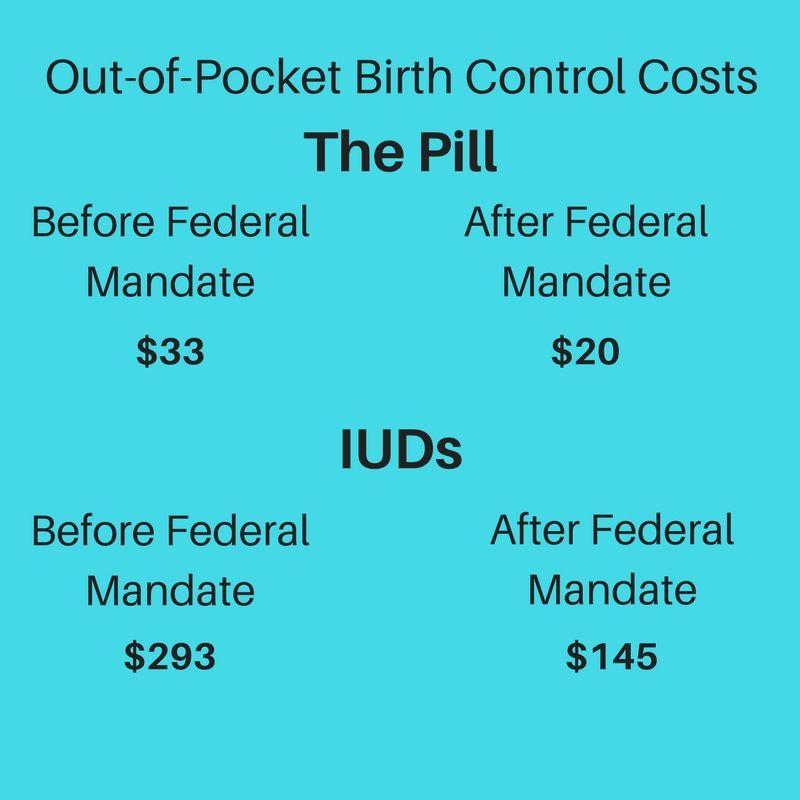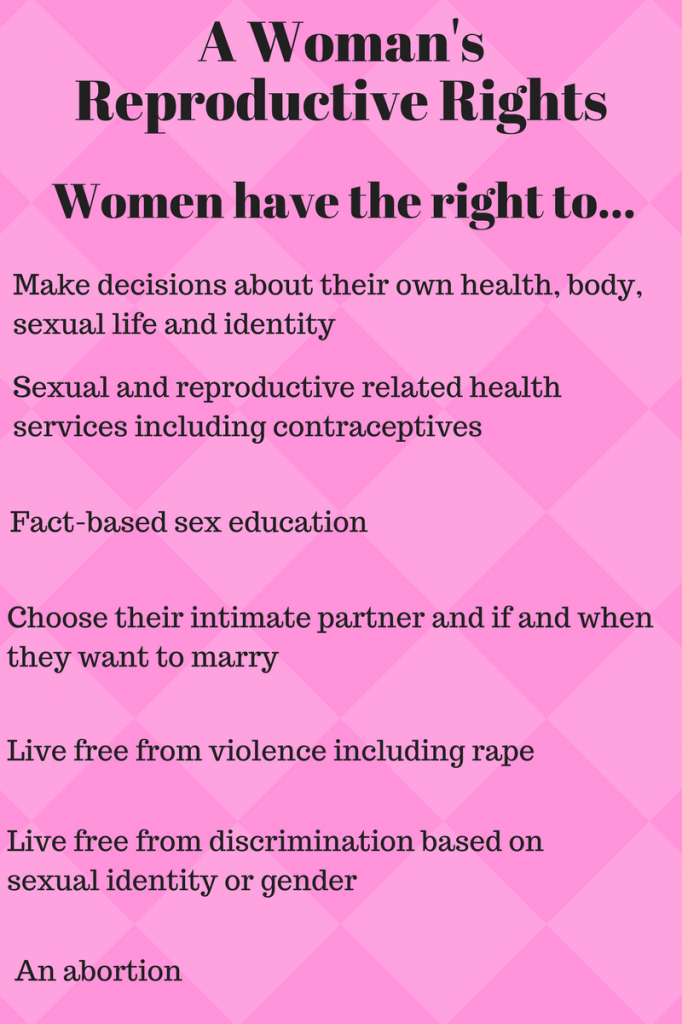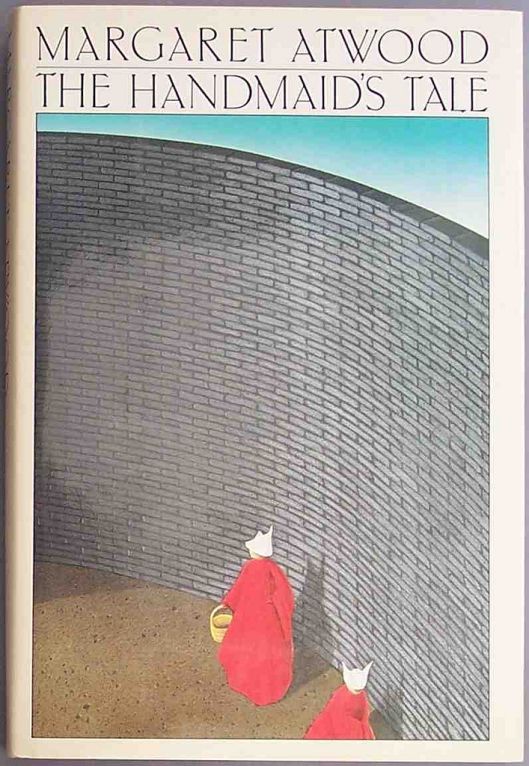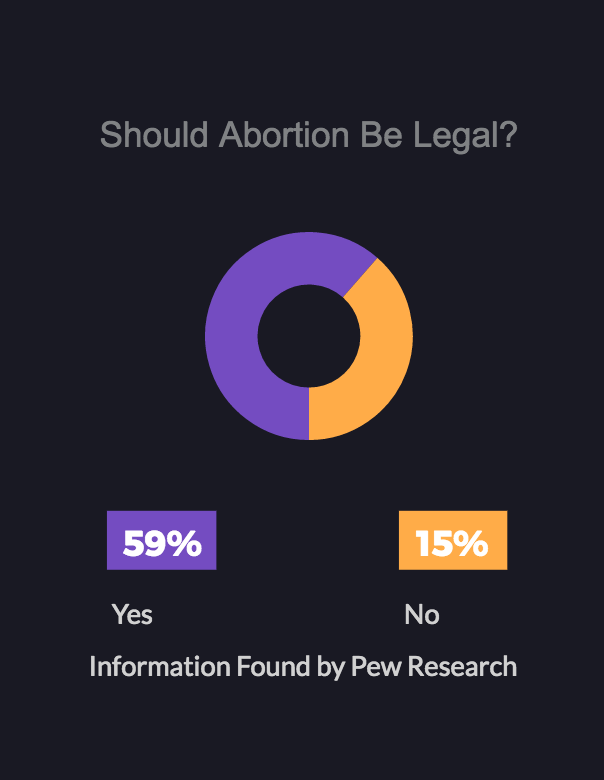Women are concerned about a potential reduction in areas that pertain to women’s health care.
The Past
From the first Women’s Rights Convention in 1848 to the Women’s March on Washington in 2017, women have scratched and clawed and fought their way to achieve equality with their male counterparts.
The 1920s brought the right to vote to females in the United States and the 1960s brought the push for equal pay.
“Until that time it was kind of a given that women would grow up and go through puberty and you get pregnant and your professional life is kind of over and you’re either raising a child on your own and truly living in poverty because it was very hard to get a job that could support yourself and your child or you were stuck with whatever guy you were stuck with,” communications professor Cathy Yungmann said. “It was really a dead end and a terrible existence for a lot of women that really had no choices in their lives.”
President Trump’s Plan
With President Trump at the helm of the United States, many women are afraid that their health care and the right to their own bodies are in jeopardy. They believe that the progress women made throughout history will be reversed. Trump wants to reform Obamacare and the amount of coverage it offers Americans. Women are concerned about a potential reduction in areas that pertain to women’s health care. One prominent stance he has taken is defunding Planned Parenthood.
“Back in my college days it was the only affordable place that a lot of female students could get health care,” Yungmann said. “And it wasn’t just birth control or abortion services they were getting. They were getting annual checkups and mammograms and all kinds of women’s health discussions they could have with Planned Parenthood employees. I think it is such a slam to women if you want to do away with Planned Parenthood. It is just the most affordable that a lot of women have access to.”
According to the Affordable Care Act, private health care plans must provide coverage for contraceptives without charging out-of-pocket costs. Before the federal mandate, the majority of women’s health care went towards contraceptives. A study published in “Health Affairs“ found that out-of-pocket spending for birth control pills fell from $33 to $20 and IUDs dropped from $293 to $145 after the federal mandate was put in place by Obamacare. Women on the pill also saved an average of $255 a year.

But is it truly a man’s place to tell a woman what she can and cannot do with her own body? Those in power are mainly wealthy, older, white men.
Making decisions with a new perspective
Sarah Carter, the assistant director of student diversity, compared what America’s Congress looks like to a school board of directors. “If you are on a board of education and you just have a group of older white men who are making the decisions about the school system in your county, then what sense are we looking at things through? It is just 10 straight white men? But what types of people are we including in the decision making process to represent the people that we are serving?”
America isn’t just wealthy white men. It is a diverse nation filled with many cultures, languages, sexual identities and genders.
“We need to look at any decision that’s being made and ask if it is serving that population appropriately because who have power in populations need to be the voice of the people, which is incredibly important looking at the members of our community,” Carter said. “They need to say, ‘are we serving these people appropriately in a way that they need?’”
Women’s Empowerment
Women are now fighting for the rights to their own bodies and empowering each other to do so.
“I think women really need to know about their bodies to feel empowered so that they have control of their lives,” Yungmann said. She believes that society changed when women began to have a choice about whether or not they wanted to become pregnant and when they wanted to become pregnant. Birth control gave women an alternative to the lifestyle of being just a mother and a housewife. It gave them the option of independence and not needing to rely on a man for a good life.

Women need to know their sexual and reproductive rights. Amnesty International describes these rights as the right for a woman to make decisions about her own health, body, sexual life and identity without fear or discrimination, the right to sexual and reproductive related health services including contraceptives, the right to have access to fact-based comprehensive sex education, the right to choose their intimate partner and if and when they want to marry, the right to live free from violence including rape and the right to live free from discrimination based on sexual identity or gender. The most debated and controversial right that is given to women is the right to an abortion. The right gives this service to women in a minimum of cases that include rape, incest, their life or health is at risk or when there is severe or fatal impairment to the fetus.
“There are some people that even if a pregnancy is a result of rape do not believe that there should be any abortion services or anything like that,” Yungmann said. “If you’ve never been a victim of a rape or unwanted assault of any kind then you I think have no empathy for what that would be like.”
Domestic Violence and Children
One form of domestic violence towards women is having children. Sometimes domestic violence results in a woman getting pregnant with a child she does not want to have, or having more kids than she desires.
“If you’re in an abusive relationship the most surefire way to have control over someone is children. The number of children they have,” Tommie Wilkins, the grant coordinator for the Office of Violence Against Women Grant, said. She talked about “stair step” children, which is when a family has one kid each year. For example there would be a 6-year-old, a 5-year-old, a 4-year-old, a 3-year-old, a 2-year-old and a 1-year-old. Wilkins mentioned that with that many children that young it it hard to leave.
“I’m not just talking emotional or financial. I’m talking physically just walking,” she said. “A woman I knew, who came to the shelter I was working at had four kids: a 3-month-old, a 1-year-old, a 2-year-old, and a 3-year-old. She came to the shelter with just one of those umbrella strollers. One. She had four kids and those things are notoriously unstable so you can’t put two of them in there because there’s no room. It took a lot for her to leave because it was hard. You don’t want to leave the kids but how do you physically make that happen? How do you leave the house? Because you can’t carry four kids. You can’t walk with four kids. You can carry maybe two while the 3-year-old is upset because you’re not carrying him/her because that’s just how 3-year-olds are. You just can’t maneuver, so kids are a form of domestic violence.”
With mothers who have left their children, Wilkins said that she has seen them become suicidal. The financial burden on these women is also weight. “A long time ago I figured out that you would need to give this woman $60 thousand a year. Now it’s probably more like $100 to 150 thousand to leave, in cash only. They need a mode of transportation and then once they get to a safe place she will need childcare, and let’s talk about good childcare. That $150 thousand might not even cover that,” she said.
In January the House passed a bill that bans the use of federal funding for abortions, or to subsidize them through private insurance. This is being known as the Hyde Amendment and it mainly impacts women who are reliant on Medicaid for their health insurance.
“I can remember so many times when legislation was being discussed and debated at the federal level about funding and what was legal and what should not be legal, that some of the comments from the male members of Congress were just so outrageous,” Yungmann said. “They obviously did not understand how a woman’s body works. They were just clueless and in the dark and they were making the decisions and that was just awful.”
Who should have the say?
“As I watch the news and I hear things, I feel like we’re about to be living in chapter three of ‘The Handmaid’s Tale,’” Wilkins said. “Women were no longer educated. They are broken into three categories. You could be a wife. You could be, what they called, the Marthas who were older women who cooked and cleaned. And Handmaids who were sex slaves for the ruling class of men.”
Margaret Atwood’s novel is a dystopian universe set in the future. America’s future.

Pew Research conducted a survey and found that 59 percent of the public says abortion should be legal in all or most cases, while 37 percent say abortion should be illegal in at least most cases.
“It’s just odd for me when it comes to conversations of abortion,” Wilkins said, “It’s okay to not be in favor of it. If you’re not in favor of it that’s fine FOR YOU. More power to you. This is ME. You don’t get to tell ME what I can do and what I can’t do.”
A strong influence in the debate over abortions is religious beliefs.
“If you’re saying abortion is a sin, so is stealing and from my religious tradition a sin is a sin is a sin,” she said. “So there are other sins to worry about. One’s not worse than the other and also if you want to combat this, instead of protesting that it shouldn’t happen that’s fine, but how about saying ‘I don’t want you to have an abortion,’ or ‘Let’s talk about what we’re going to do with this kid after it’s born.’ You don’t hear anything about that. You don’t hear about people wanting to adopt.”
She believes that instead of shaming those who make the choice to have an abortion, for whatever reason, those who oppose the decision should be more helpful and understanding.
“If you want me to bring this baby to term, who’s taking care of it? Why don’t churches put together serious adoption programs?” she said. “So while you’re standing outside these places you can say, ‘We have an adoption program.’ If that’s your belief system [anti-abortion] that’s fine, but let’s deal with the other part. If you’re saying it’s a sin and you want to work on it then fine, but what do you want to do with these children?”
Yungmann grew her family through adoption.
“I myself find that people who are so against abortion really have an onus and a responsibility to adopt children because how can you say these babies must be born and maybe the mother can’t take care of it?” she said. “Then I think it is your responsibility to adopt these children and help them grow up if you feel so strongly that there should be no abortion.”
The controversy surrounding abortion comes down to a battle of belief systems.

“There are other people who feel it is so against their values that any precautions being taken against pregnancy or any form of abortion be used that they just want to shut out those option for women, or to make it as difficult as they can so it virtually becomes impossible,” Yungmann said. “I am so much against that because it has put women at such a disadvantage in controlling their lives and in society making choices.”
People need to take the blinders off and start viewing the world through a different set of eyes.
“What happens in our lives is extremely important and our lived experiences and how we view the world is extremely important,” Carter said. “We all have different identities and we all have different needs and it is important that people stand up and fight for their beliefs in order to build an inclusive world.”
In order to make sure that America keeps the title of a land of opportunity and freedom, the fight for women’s rights needs to continue on. While moral and religious beliefs divide people, the right to have a choice should unite them.
“We as women need to be mindful of our rights,” Wilkins said. “You can have your philosophical, your religious, your moral views, which are good. But we need to be mindful of keeping what we have. So if you think you should have rights A, B, C and D then fight to have that. Don’t sit back and go, ‘They’re going to give it to me.’ No. This is what I want and I am going to fight for it. You don’t necessarily have to protest, but be vocal. Use your vote and use it wisely.”




President Obama is the first President in history to create the White House Adviser on Violence against Women, showing a genuine concern for battered women and abused children. Hundreds of thousands of battered women owe their lives and well-being to President Obama and Vice President Biden.